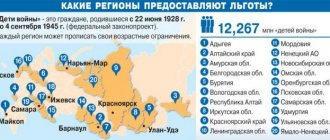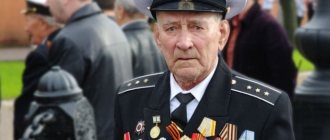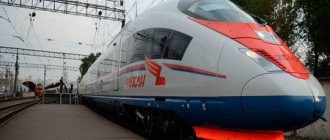For the heroism and patriotism shown during the Great Patriotic War, veterans are deservedly honored and encouraged every year. They receive increased pensions, subsidies, bonuses, financial assistance, apartments, cars, trips to a sanatorium, help with repairs, and much more. All this is undoubtedly correct. However, there is another category that also deserves increased attention - the home front workers of the Great Patriotic War. These people provided for the needs of not only the front, but also the entire Soviet people. Their contribution to the victory over the Nazis was truly enormous.
Situation in 1941
During the first weeks of the war, large industrial enterprises were urgently relocated from the European part of the country to the eastern part. Between July and November 1941, more than 1,500 factories and 10 million workers were sent to the Urals, the Volga region, Siberia, Central Asia and Kazakhstan. Since there was an acute shortage of specialists in the places where the enterprises were relocated, local residents were involved in the production of military and other products needed by the front. These were mostly old people, children and women. A lot of products were needed for the front.
In this regard, people had to work for 12-18 hours without rest or sleep. The home front workers, whose photos are presented in the article, endured many difficulties and hardships. Thanks to their work, by the end of 1941, tank production was restarted, and a metallurgical base was created in Siberia and the Urals. Due to this, already in the 4th quarter of the first year of the war, the Ural industry alone provided 82% of cast iron, 52% of copper, steel and rolled products, 100% of aluminum, cobalt, nickel, magnesium, 30% of zinc and most of the chemicals. This made it possible to completely put industry on a war footing during 1941.
By the second half of the year, mass production of heavy and light machine guns, more advanced guns, tanks, and aircraft was launched on a scale that was 1.5-3 times higher than the production of the first half of the year. By mid-1942, 1,200 large relocated enterprises were operating at full capacity in the east of the country. By this time, WWII home front workers had provided 5,900,000 small arms, 287 thousand mortars and guns, 245,000 tanks, 21.7 thousand aircraft. All this fully satisfied the needs of the army.
The Chief Archive published the names of all home front workers awarded the medal “For the Defense of Moscow”
More than half a million names of those awarded the medal “For the Defense of Moscow” have appeared in the virtual museum “Moscow - with care for history,” said Anastasia Rakova, Deputy Mayor of Moscow for Social Development.
The Battle of Moscow ended on April 20, 1942, when Soviet troops drove the German army back from the capital and liberated the Moscow and Tula regions, as well as a number of areas of the Kalinin (now Tver) and Smolensk regions. On this day, the Moscow Main Archive is completing a project to publish the names of home front workers in the virtual museum “Moscow - caring about history.” All these people distinguished themselves during the construction of defensive structures on the approaches to the capital during the Battle of Moscow. The list is supplemented by a short biography indicating the year of birth, nationality, position at that time and a description of the feat.
“It is very important to preserve not only the history of the country and city, but also of each individual family. That is why on December 5, the Day of Military Glory of Russia, we launched a very important project to publish lists of those awarded the medal “For the Defense of Moscow.” Over these few months, a lot of work has been done to digitize and publish data. And today, city residents can see the names of their relatives among half a million names of people who have accomplished a real feat of labor. And these are not military personnel, but civilians - workers, engineers, collective farmers, office workers, students, housewives. A third of all recipients are women and children. All surnames are arranged in alphabetical order, so they are easy to find,” said Anastasia Rakova.
In addition to the lists, the museum was supplemented with 30 videos in which Moscow schoolchildren read letters from their peers who found the Germans in the Solnechnogorsk district of the Moscow region in November 1941. For example, children talk about how they lived under the German occupation, how the Nazis abused captured Red Army soldiers, robbed and killed local residents. In many letters, schoolchildren wrote that they would not be able to forget those two weeks that they spent next to the German army, it was so scary and difficult. The children said that even during the retreat, the Nazis burned all the “houses, barns, collective farm buildings, school, library, store,” stole livestock and slaughtered all the poultry.
Also in the virtual museum you can see a film about the defense of Moscow. It is based on interviews with two women veterans of the Great Patriotic War, Apollinaria Kartseva and Larisa Martirosyan, both of them participants in the defense of Moscow. You can see the surviving defensive structures on the interactive map.
600 thousand residents of the capital, over 400 thousand of them women, went to defensive construction in October 1941. The length of the anti-tank ditches alone, built by their labor near Moscow, was 676 kilometers - the approximate distance from Moscow to Cheboksary. The townspeople erected defensive structures until the end of the Battle of Kursk in 1943, when the German army was finally deprived of the opportunity to break through to the capital.
Since the beginning of the year, the Main Archive has accepted for storage more than 40 million documents. Rare books and memoirs of famous Muscovites: what documents have been added to the Main Archive's funds
Agriculture
He had enormous tasks ahead of him. Agriculture was supposed to provide the army and civilian population with a sufficient amount of food, and industry - raw materials. But in the first months of 1941, agriculture suffered significant losses. In 1940, there were more than 230 thousand collective farms in the country. By the end of the first year of the war, their number decreased by 86.5 thousand. In general, the material and technical base has been significantly reduced.
Most of the diesel tractors, cars, and horses were taken into the army. The volume of procurement of agricultural products has sharply decreased, and the number of livestock has decreased. The villages suffered from a labor shortage. The situation in the agricultural sector was complicated by the fact that it was not supported by the state. On collective farms at that time there was a system of residual payment for workdays. Almost all products that were produced were handed over to the state.
For workdays, a small amount of potatoes and grain was given out. In 1941, raw materials and food were supplied mainly by state farms and collective farms in Central Asia, Kazakhstan, the Volga region and Siberia. Through incredible efforts, people managed to increase the area of winter crops by 2 million hectares and hayfields by 67%. Thanks to this, the procurement of succulent and roughage has increased. This, in turn, made it possible to preserve livestock and provide the population and army with food, and industry with raw materials.
The meaning of activity
In 1944, the volume of output exceeded pre-war figures. At the same time, the production of products for the front increased to 312%. It was this active transfer of the country to the war economy regime that made it possible to ensure the deployment of offensives by Soviet troops at the final stage of the confrontation. For all the heroic efforts that were made, the enormous contribution to the fight against the enemy of the people who worked to support the front began to be called home front workers.
Stalin said that the army had won a military victory in a difficult and prolonged struggle. The home front workers denied themselves everything, deliberately going through hardships in order to give more to the front. They won an economic victory over the enemy. Many of these people received the Home Front Worker medal.
Situation today
Every year on Victory Day, home front workers, veterans, and representatives of public organizations write about the unfair treatment of the merits of people who worked to support the front. In 2009, the Coordination Council of the Association of Veterans' Organizations of the CIS together with the International Conference at the next meeting decisively and reasonably raised the issue of the plight of these heroes. A proposal was put forward that home front workers who made an invaluable contribution to the victory and revival of the country’s economy after the end of the war would also receive the status of WWII participant, along with guarantees and benefits.
The living conditions of these people are in most cases extremely unsatisfactory. Their pensions are quite low, their food is very meager. Many of them continue to live in conditions of strict economy, buying cheap, and therefore low-quality products. But the most important thing is the poor health of home front workers, because the “youngest” are already well over 70. As a result of this, they often pass away without receiving the well-deserved gratitude of the Motherland. First of all, these people have the right to count on a decent pension, such as that provided by the state for WWII veterans.
Benefits for home front workers
The state today provides a number of social support measures for people who worked to support the front. In particular, there are the following benefits for home front workers:
- The right to receive a unified social card for travel on all types of urban passenger and automobile (except taxis) public transport, including suburban ones, and in their absence, intra-district (intercity) routes.
- Free medical care in clinics to which individuals were assigned while working, receiving assistance under the state guarantee program.
- Providing prescription medications with a 50% discount on the cost.
- Free production and repair of dentures (except for those made of precious metals and metal-ceramics) in municipal and state medical institutions, and in their absence, in other health care organizations at the place of residence.
- Receive a monthly subsidy.
- The right to a 50% discount on railway travel.
- Admission to homes for the disabled and elderly, social service centers in the first place, as well as extraordinary admission to provide services from social assistance departments at home.
- Subsidies for utilities and rent.
How to properly arrange benefits for home front workers
Registration of assistance occurs in several stages:
- obtain the status of a worker. This involves collecting documentation that will indicate the right to receive subsidies. You can apply for the status of Home Front Worker. This could be a document about awards or submitting a request, with the help of which the service will search for confirmation of the fact that the citizen actually helped on the home front;
- contact the social security authority and write an application on the basis of which a certificate is issued. The review period is 3 days, during which the commission will consider the citizen’s request and issue a certificate. And one more month for registration and issuance;
- After waiting for the specified period, the citizen who submitted the application will receive a certificate in the form of a registered letter to the address of residence. You can pick up the document in person, after notification of readiness by phone from the social service. protection;
- Upon receipt of the certificate, the citizen is required to sign the document.
It happens that due to the lack of sufficient facts and evidence, a citizen’s request to obtain a document will be denied.
In this case, he must apply to the court with a claim to consider the case for obtaining a certificate, if he is sure that he has the right to receive it.
Who should receive a certificate
Any citizen who helped in the rear can receive a certificate and has confirmation of his activities. The duration of work and assistance must be at least 6 months. during the war from 1941-1945.
Proof can be a medal, order, or the presence of records in the archive about citizens who were and helped in the rear during these years.
When registering, you need to prepare the following documents:
- passport;
- work book.
List of state aid
According to the new legislation, benefits for home front workers in Russia are provided in the form of assistance and have been slightly reduced for many categories of WWII veterans, which also affected workers.
There are benefits that are provided on the basis of federal law, and the recipients are absolutely all citizens with a home front assistant certificate. You can apply for benefits.
There are many types of assistance that are provided only in certain regions of residence, since regional assistance can be provided based on the availability of sufficient financial resources in the regional budget.
All citizens with a certificate receive a 50% discount on metered housing and communal services payments, the opportunity to become members of dacha cooperatives, get a place in a nursing home, or receive help from social workers.
All benefits receive EDV payments of about 650-700 rubles. Other benefits also exist, but depend on regional programs and the filling of the regional budget.
In 2015, veterans and workers received a one-time payment from the state, regardless of their region of residence.
Healthcare sector
In the healthcare sector, a home front worker can receive the following benefits:
- free medical care with subsequent treatment;
- subsidized medicine at half the actual cost;
- a trip to a sanatorium facility if there is a referral from the attending physician;
- discount on the installation of dentures, if made with inexpensive material, in a public clinic.
Public transport
Home front workers can move around the city using public transport absolutely free of charge, provided they have and provide an identification card.
This benefit applies to all city transport, except taxis. Citizens are given a half-price discount on intercity train travel. Free travel to the place of sanatorium treatment if prescribed by the attending physician.
Monuments to heroes
The monument to home front workers is intended to consolidate and perpetuate the heroism of the Soviet people who worked during the period of confrontation with the fascists for the benefit of the Motherland. Monuments were erected in regions of Russia and the former USSR. Their mass installation has been organized since 2010. The bulk of the monuments were erected from 2012 to 2015. Thus, the monuments were installed in:
- Altai region.
- Bashkortostan.
- Vologda region.
- Krasnodar region.
- Kaluga region.
- Mordovia.
- Kemerovo region.
- Kostroma.
- Moscow region.
- Novosibirsk.
- Nizhny Novgorod region.
- Omsk.
- Orenburg region, etc.
Who are the home front workers?
Who is entitled to the mentioned benefits? First of all, these are people who were minors during hostilities and were involved in labor for the benefit of the state.
To confirm, such citizens must find documents in the archives, work records, or enlist the support of eyewitnesses who can attest to the fact of labor relations.
Please note that only those persons who were born after December 31, 1931 must prove the fact of work during the war. Everyone who was born earlier automatically receives an increase in their pension benefits.
If all the nuances come together, citizens receive the title of home front worker, as well as the accompanying certificate and medal. These provisions are enshrined in the 1995 federal law regarding veterans.
If citizens worked in enemy-occupied territory, then this activity is not included in the length of labor relations.









